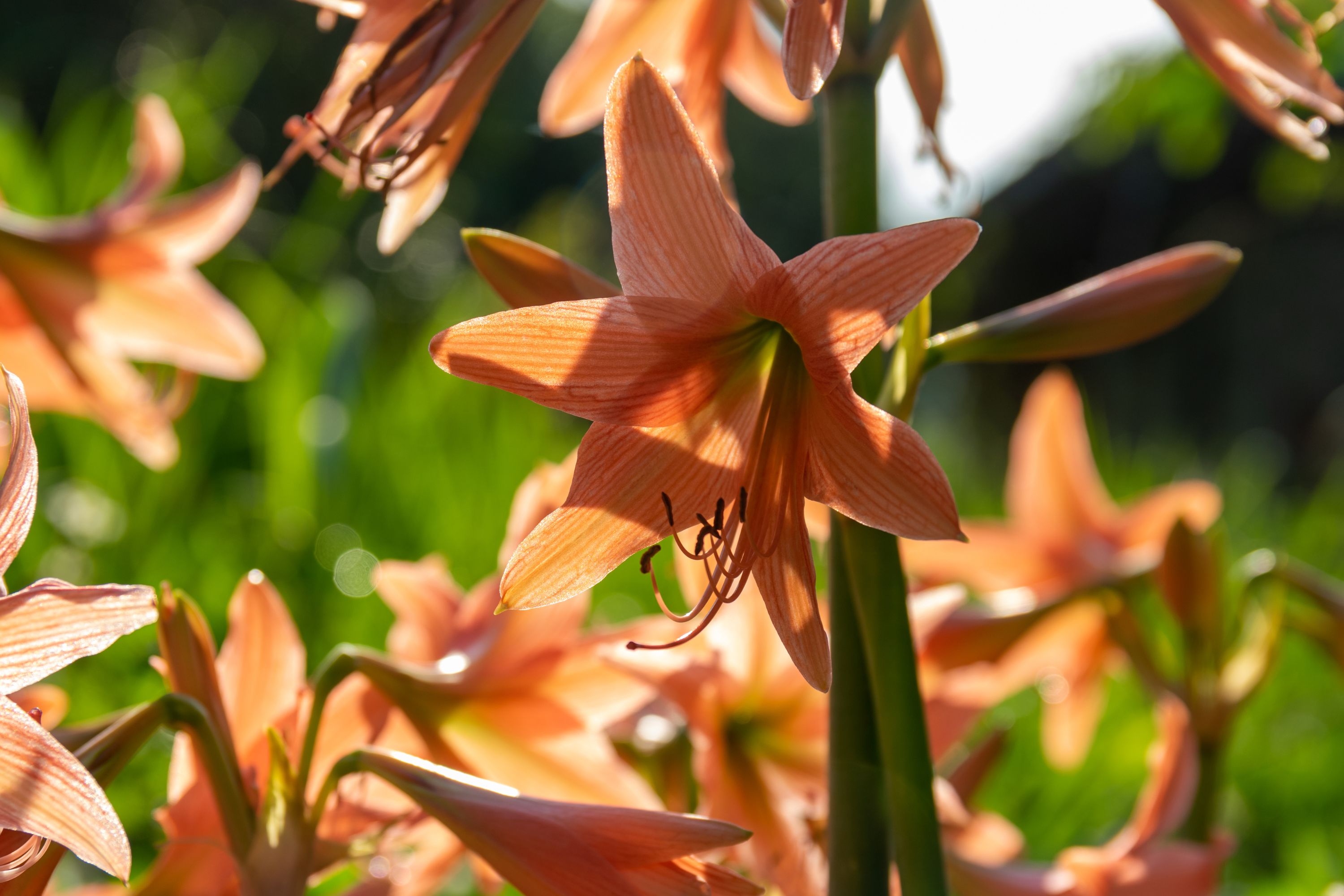Striped Barbados Lily
(Hippeastrum striatum)

Description
Hippeastrum striatum, the striped Barbados lily, a flowering perennial herbaceous bulbous plant, in the family Amaryllidaceae, native to the southern and eastern regions of Brazil. The flowers, generally 2–4, are smaller than other members of the genus. The paraperigon features bristles at the throat of the tepal tube. The perigone is about 7.6–10 cm in size and the tepal segments are 2–2.5 cm broad in their middle. Their colour is a bright red with a green keel that extends halfway up the segment. The stigma is trifid. Described in 1963 in Baileya. the name is derived from the Latin word striatus (striped). It is similar to H. petiolatum and H. puniceum. Earlier synonyms have included species of Callicore and Lais, now considered to be Hippeastrum, as well as species of Amaryllis, from which Hippeastrum was separated. Produces numerous bulbils that facilitate its escape and naturalisation in tropical areas. It will grow from seeds in about two years. Most Hippeastrum bulbs are tunicate (a protective dry outer layer and fleshy concentric inner scales or leaf bases). The bulbs are generally between 5–12 cm (2"–5") in diameter and produce two to seven long-lasting evergreen or deciduous leaves that are 30–90 cm (12"–36") long and 2.5–5 cm (1"–2") wide. The leaves are hysteranthous (develop after flowering), sessile (borne directly from the stem or peduncle), rarely persistent and subpetiolate. The flowers are arranged in umbelliform inflorescences which are pauciflor or pluriflor (2-14 flowers), supported on an erect hollow scape (flower stem) which is 20–75 cm (12"–30") tall and 2.5–5 cm (1"–2") in diameter with two free bracts forming a spathe which is bivalve with free leaflets at its base. Depending on the species, there are two to fifteen large showy flowers, which are more or less zygomophic and hermaphrodite. Each flower is 13–20 cm (5"–8") across, and the native species are usually purple or red. They are funnelform (funnel shaped) and declinate (curving downwards and then upwards at the tip)in shape. The perianth has six brightly colored tepals (three outer sepals and three inner petals) that may be similar in appearance or very different. The perianth segments are subequal or unequal. The tepals are united at the base to form a short tube, usually with a rudimentary scaly paraperigonium with fimbriae or a callose ridge present at the throat.
Taxonomic tree:







